Interpretive, Interpersonal, and Presentational Modes of Communication
Exploring Culture
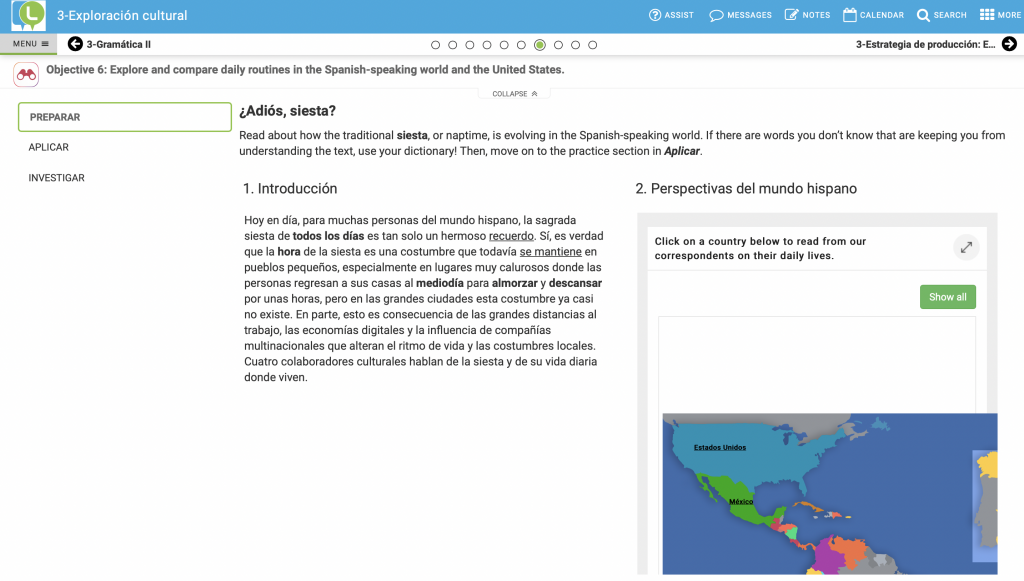
This excerpt roughly translates to, “for many people in the Hispanic world, the tradition of la sagrada siesta is becoming a memory, however it is still a custom that still remains in small towns, and places where it is very hot, but not in big cities.”
La siesta is an old Hispanic tradition where at noon workers go home for a hour or two to rest before going back to work. La siesta was as still present in many Hispanic countries around the world, including México, Spain, Perú, and Argentina. The tradition of la siesta is a still practiced tradition however is a tradition that is dying due to the ever changing world that we live in.
After first time hearing about la siesta I was interested, I had never heard about a tradition that let workers go home halfway through the work day to rest. When I put thought into it I realized that la siesta was a good idea and cultural tradition that promoted hard work and happier employees. Giving workers a break throughout the day boosts motivation and keeps workers from burning out when it comes to working all the time. I have known that Hispanics tend to be hard workers but never understood too much of how, whether it was the music or the work ethic passed down from generation to generation, but being introduced to la siesta made me understand that with a decent timed break work ethics stay strong and working hard is encouraged.
Engaging in Communities
The importance of understanding Spanish to engage in the immediate communities and global communities is ever so growing, with the immigration of Hispanic Spanish speaking individuals in the United States. As Spanish speakers are becoming more prominent in the United States the need to understand Spanish is growing, without it you can be left with the lack of what is going on in your community.
Although I have a lack of pictures and evidence I have had to work with Hispanic Spanish speaking people in the past, with a lack of knowledge in Spanish and Hispanic culture, I felt left out in a sense where there was a border in-between each of us when it came to getting on the same page.
Interpersonal Communication
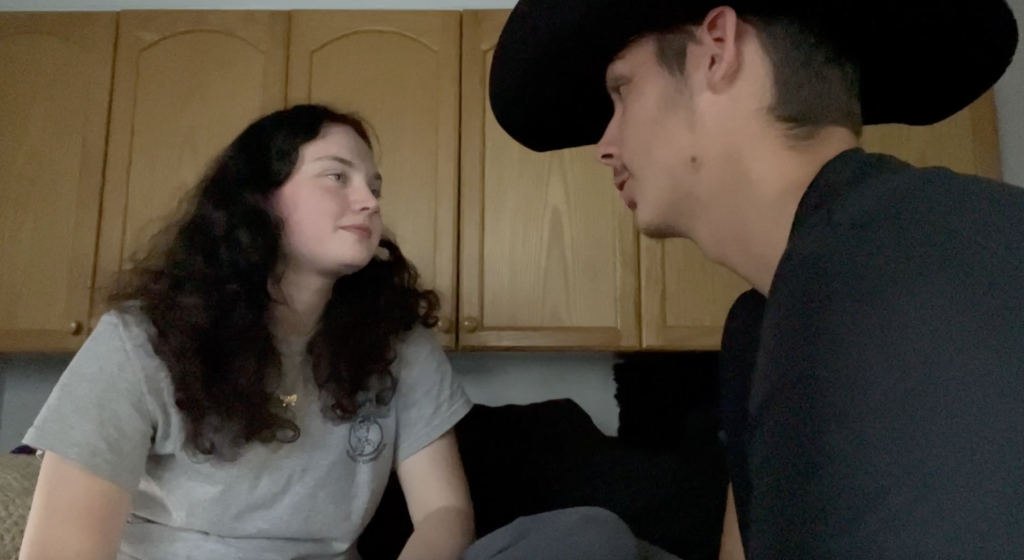
In this clip, me and a fellow partner from another Spanish class have a very basic conversation in Spanish. With many questions consisting of What is your name? How old are you? How many classes are you taking this semester? etc.
This communication was a conversational communication that was mostly unplanned other than the fact of letting my partner know of which questions I would be asking to be on the same page. Each assignment that I complete gives me a better understanding of the language and helps me get more comfortable with pronunciation of Spanish words. The pronunciation of words in Spanish is one of my struggles, however I can overcome this struggle by slowing down sounding out the word and practice it. Sometimes I would look on the internet to see if I could find someone saying the word and trying to pronounce it the same as the video.
Presentational Speaking
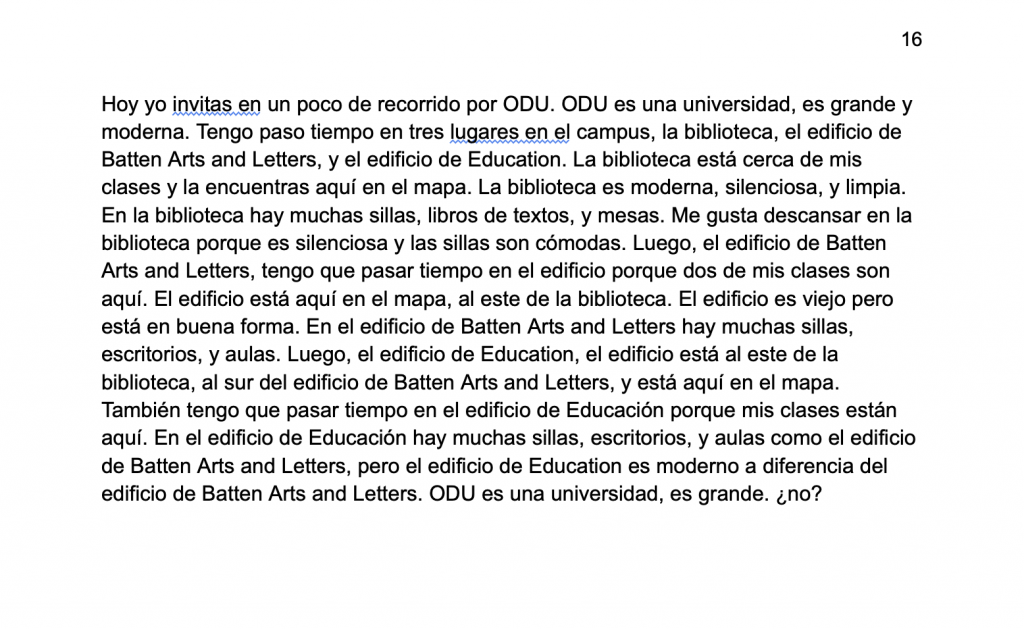
This is my Unit 4 project script that I followed when giving my presentation. Although I never had any hard challenges there were some that seemed kind-of difficult at first but turned out to not be that bad when completing it, for example my directions and describing each building. Another challenge for me was making sure I was spelling words correctly to help my pronunciation and sound more professional. I would try not to be as repetitive next time too give the overall speech a better flow but for a beginner level course assignment, I do not think I did that bad.
Presentational Writing
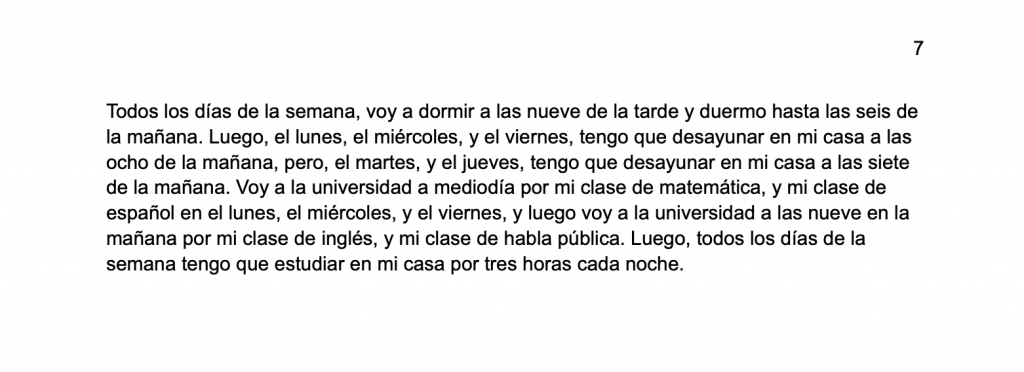
This is my Unit 3 project where I had to write about my schedule of my week. In this short composition I described what I normally do Monday, Tuesday, Wednesday, Thursday, Friday, Saturday, and Sunday. Although it is a short composition there is still a lot of information in it.
I had grown my knowledge of the days of the week and activities in Spanish more than what I had known about before. While doing the assignment I had noticed that when typing my sentences in Spanish it became easier for me to do. I was gaining the understanding of how to form basic, to somewhat complex, sentences in Spanish. I believe that I could have gone into more detail when describing my week however I believe that I did well for what I know now. I had found writing the time to be the most difficult part of the assignment however it was not horrible and I managed to figure it out and once I did I understood it more.
Interpretive Listening
There were lots of Interpretive listening during this class whether it was listening to the professor read a text or watching a video and having to answer questions about it. For example in my class I had to answer questions after watching a video of a Spanish speaking girl give a tour of her university completely in Spanish.
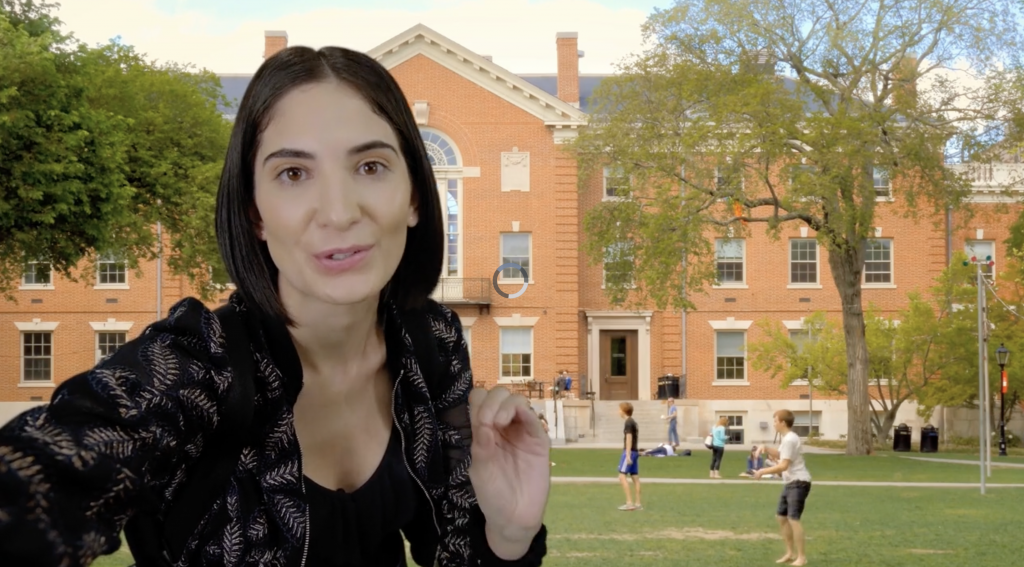
While watching this video the most challenging part was following along when she started talking quickly but rewatching it a few times it became clear as what was being said and I could understand it. I found it interesting because I could understand most of what was being said which I had not previously thought I was going to be able to do when I first saw that I had to comprehend what was going on in the video. However surely enough I figured out that it was not that bad and I had understood it more than what I thought I was going to. I believe that a takeaway to this listening experience was that the girl was probably speaking a little slower than the actual rate that Spanish is spoken in, and that she used simpler words and more easy to understand vocabulary rather than complex vocabulary.
Interpretive Reading
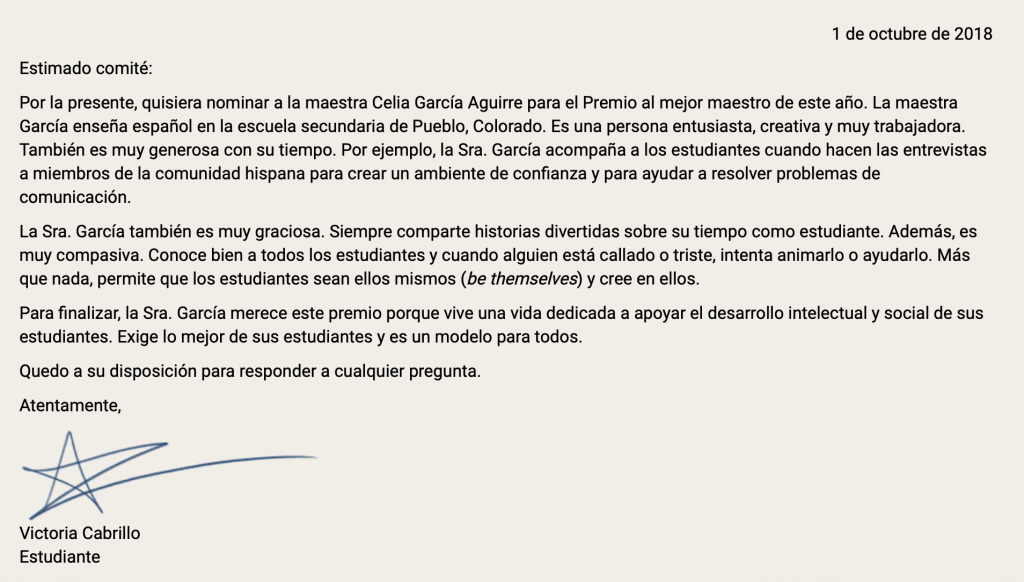
This text is from an assignment in our book, LingroLearning, and is a recommendation letter, recommending an employee for the employee of the month award.
This was the most challenging text that I had to read and comprehend for the entire semester, mainly because it was the last one for the semester making me use all of my combined Spanish knowledge to read and comprehend this text. I found that after picking out parts of the text that I know and then drawing conclusions to what the parts that I did not know meant I ended up finding out roughly what it meant. I feel like I have grown by practicing picking out parts of texts that I know and then coming up with conclusions for the parts that I don’t know and finding out what they can mean. With the practice I feel like I can comprehend and understand most texts in Spanish.